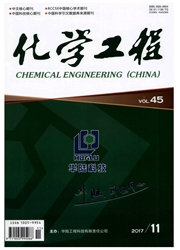

 中文摘要:
中文摘要:
采用扫描电镜、X射线衍射和生物体外(In-Vitro)降解等方法,对不同取代度DS的抗消化乙酰酯淀粉的颗粒形貌、结晶结构和生物降解性能进行了研究。结果表明:乙酰酯淀粉的颗粒表面变得粗糙并发生破损;随着乙酰基团取代度的增大,淀粉的抗消化性能不断提高,当DS〉2时,淀粉中抗消化淀粉质量分数达到90%以上,其结晶结构也由A型向V型转变。生物体外降解试验表明,抗消化乙酰酯淀粉薄膜在模拟人体上消化道环境中的降解程度低于2.5%,在人工模拟结肠环境中的微生物降解程度为30%—50%,显示出潜在的结肠靶向性和微生物降解性。由此可见,抗消化乙酰酯淀粉适合作为菌群触发型口服结肠靶向药物控释载体材料。
 英文摘要:
英文摘要:
The granule appearance, crystal structure and biodegradability in in-vitro model of native and acetylated maize starches with different degree of substitution (DS) were investigated. It showed that the acetylated starch granular appearance became rougher and was destroyed to some extent after introduction of acetyl groups to the starch molecule, and that the resistant starch content of maize starch were increased by acetylation, when DS 〉 2, the resistant starch mass fraction could be above 90% and the crystal structure changed from A-type to V-type compared with maize starch. For in-vitro biodegradation assays, the biodegradation extent of resistant acetylated starch films was below 2.5% in simulated upper gastrointestinal fluid and about 30% to 50% in simulated colonic fluid, respectively. The resistant acetylated starch films exhibited potential colon-targeting and degradability by colon microorganism. So the resistant acetylated starch films can be used for a potential microbially triggered drug delivery carrier for oral colon-targeting drug delivery systems.
 同期刊论文项目
同期刊论文项目
 同项目期刊论文
同项目期刊论文
 期刊信息
期刊信息
